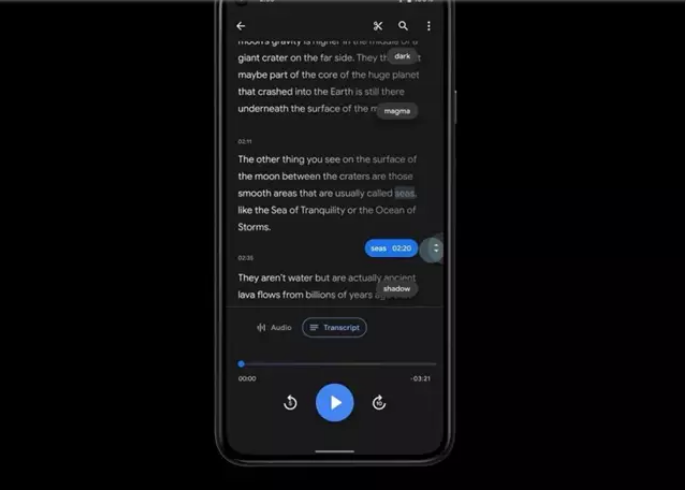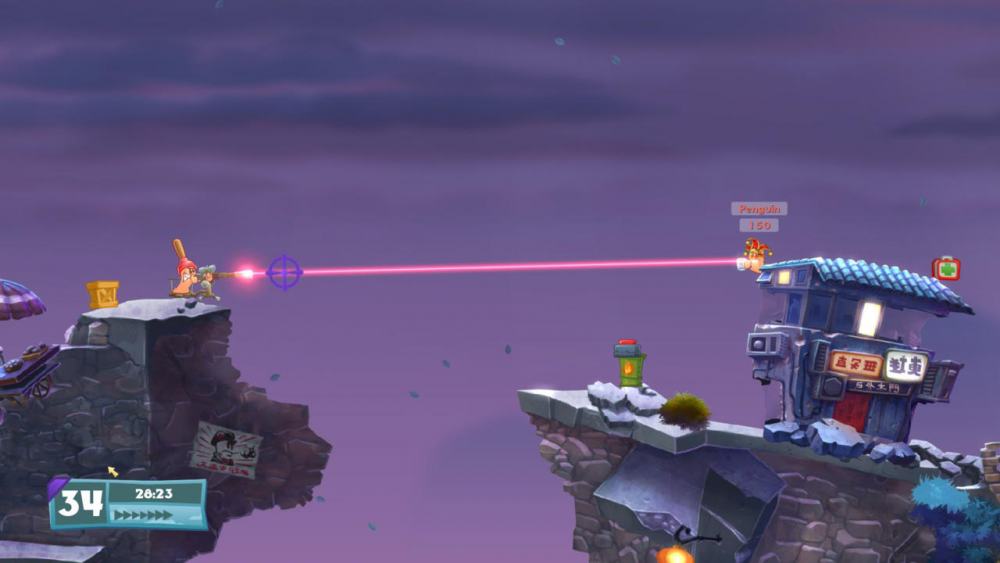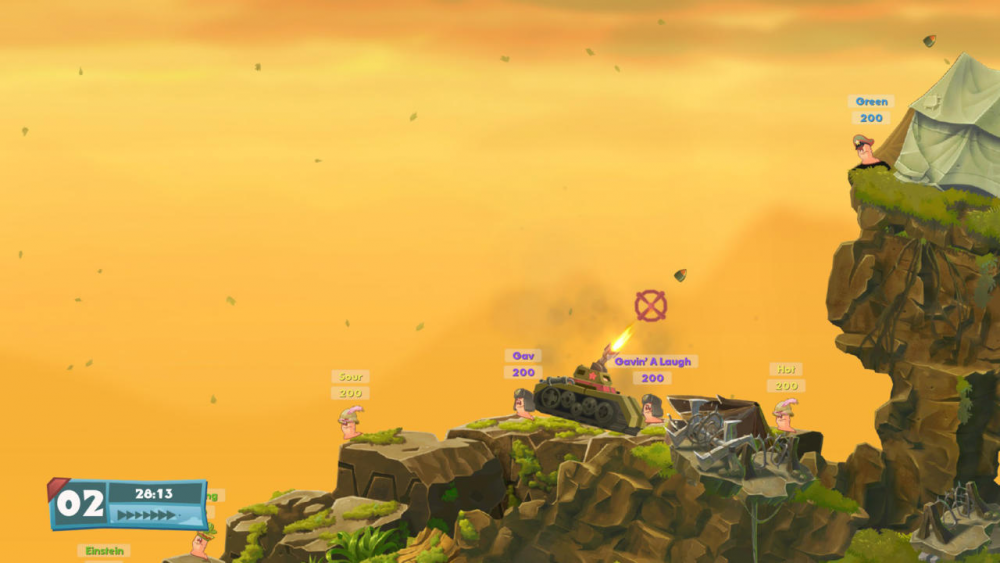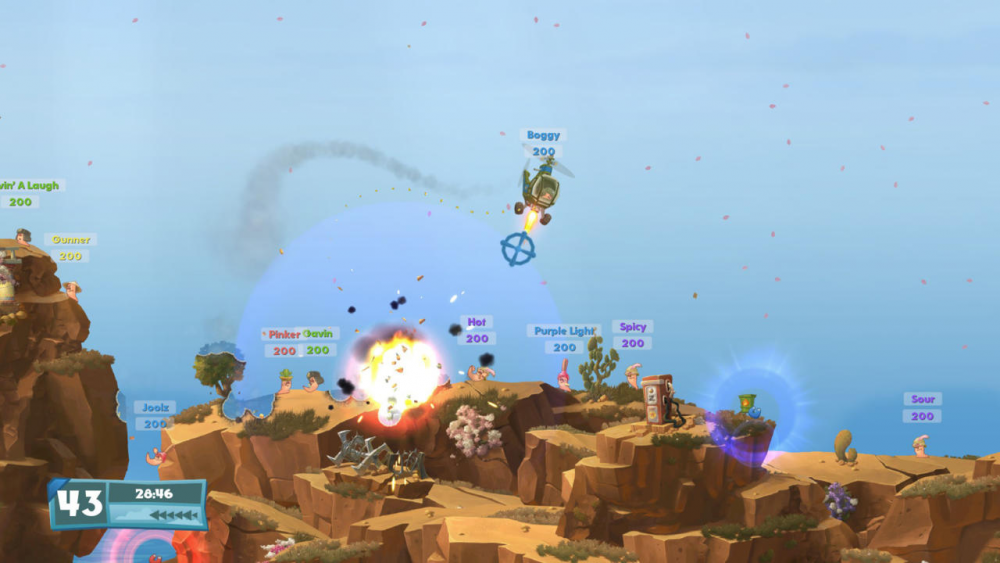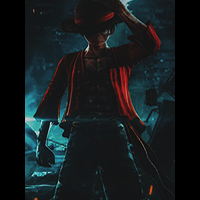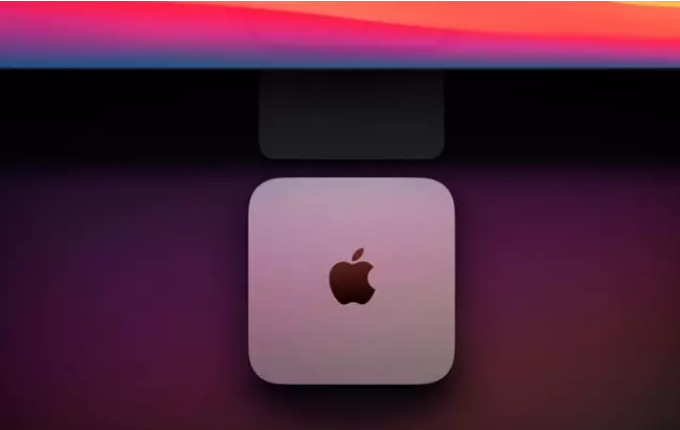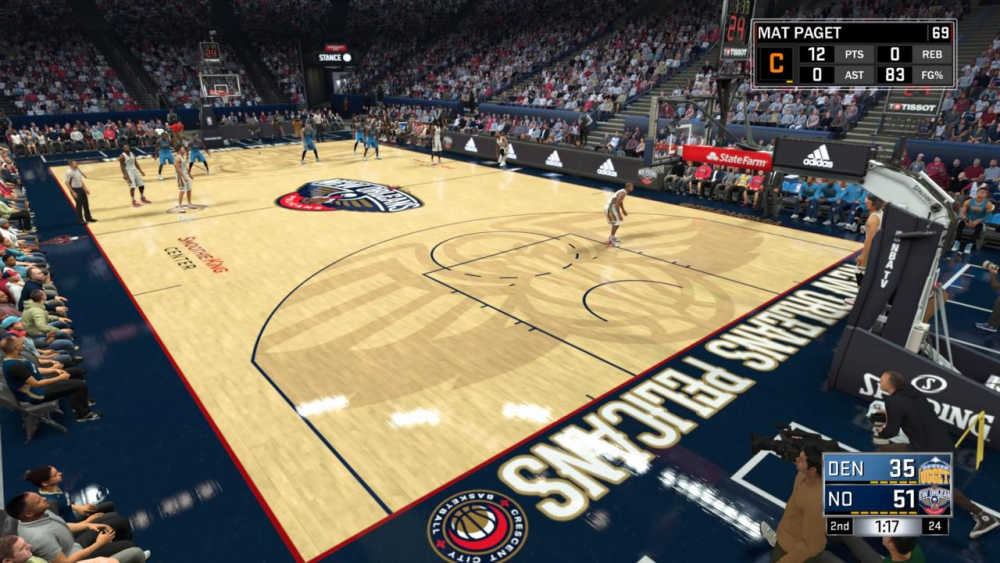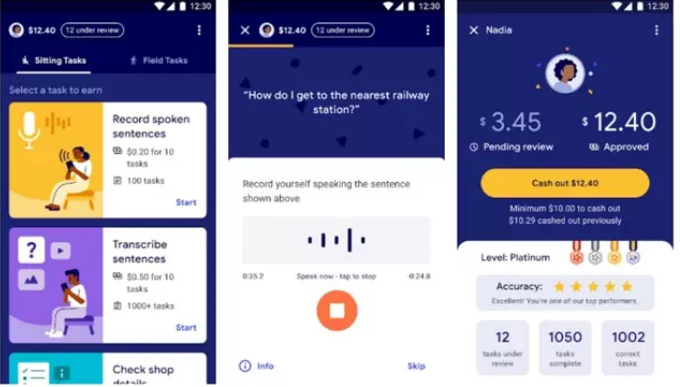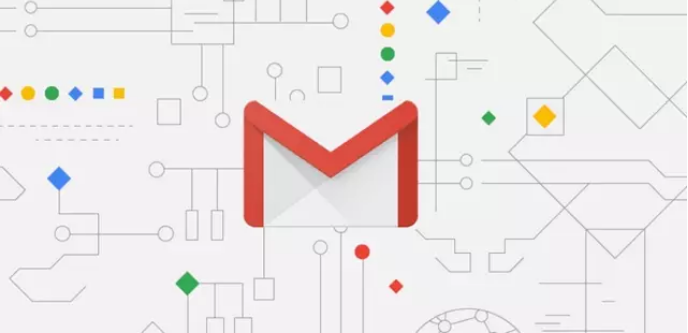Everything posted by Dark
-
If you want to rejoin the community, you must have 1 account.
Respect the rules of the forum for the next.
-
The Ministry of Health (Minsa) extended the state of health emergency at the national level due to COVID-19 as of December 7, 2020 for a period of ninety calendar days. The extension of the measure was established by Supreme Decree No. 031-2020-SA, published this Friday in the Legal Norms Bulletin of the Official Gazette El Peruano in order to continue with the prevention, control and health care actions for the protection of the population of the entire country. ADVERTISING The precise norm that corresponds to the Minsa, the National Institute of Health and the Social Security of Health - EsSalud, carry out the immediate actions developed in the "" Plan of Action-Surveillance, containment and attention of cases of the new COVID-19 in Peru ". In addition, it is established that during the extension the contracting of the goods and services detailed in the lists of "Goods or services required for the activities of the health emergency COVID 19", contained in Annex II of Supreme Decree No. 010, will continue -2020-SA, modified by Supreme Decree No. 011-2020-SA and No. 029-2020-SA. Supreme Decree No. 031-2020-SA is signed by the Minister of Health, Pilar Mazzetti, the Minister of Labor, Javier Palacios; and the President of the Republic Francisco Sagasti. OUR PODCASTS 'Living space': In this program, Dr. Elmer Huerta gave an account of the advances in the diagnosis and treatment of the new coronavirus, such as the Lucira Covid-19 home test or the effectiveness of 70% of the AstraZeneca and Oxford vaccine.
-
We have decided to sort them by franchises, since Valve has decided to do it this way on their PC video game distribution platform. Galatic Civilizations Franchise: Galatic Civilizations III for € 13.59 Galactic Civilizations II: Ultimate Edition for € 9.99. Galactic Civilizations® I: Ultimate Edition for € 4.99 Max Payne Franchise Max Payne 3 without the expansions and extras is for € 6.99, while Max Payne 3 Complete Edition can be found for € 10.49 Max Payne 2: The Fall of Max Payne for € 3.49 and Max Payne for the same price. Crysis Franchise You can find Crysis 3 for € 9.89 and its DLC "The Lost Island" for € 4.94 The Maximum Edition of Crysis 2 for € 7,49 and that of the first installment of the series also for the same price. Sniper Ghost Warrior Franchise Sniper Ghost Warrior Contracts is for € 14.99 Sniper Ghost Warrior 3 for € 3.99 and if you want the complete trilogy, then you have it for € 8.64. If you are interested in buying the second installment of the saga, you have it for € 1.99. The original Sniper: Ghost Warrior is for € 1.59 Sniper Elite Franchise The Sniper Elite Complete Pack is for € 25.33. Sniper Elite 4 for € 8.99 with its Season Pass for € 5.24. Sniper Elite 3 for € 5.59 and if you want it with your Season Pass you have them both for € 9. 19 The Sniper Elite V2 remaster for € 9.99. Sniper Elite for € 1.99. If you want an anthology of Rebellion games you can get it for € 70.87. Shadows franchise Shadows: Awakening and Shadows: Heretic Kingdoms both for € 11.99 each. The DLCs of both games are discounted up to 65%. You can get The Sims 4 for € 4.79 and most expansion packs with a discount of up to 50% each. Tom Clancy Franchise Tom Clancy’s Rainbow Six Siege for € 9.89. Tom Clancy’s Ghost Recon® Wildlands for € 14.99. Rainbow Six Bundle for € 27.41 Tomb Raider franchise Rise of the Tomb Raider for € 5.99 Shadow of the Tomb Raider: Definitive Edition for € 14.80 Tomb Raider for € 2.69. F1 franchise All F1 cars from 2011 to 2019 for € 23.95 F1 2020 for € 27.49 Life is Strange franchise The first episode of Life of Strange 2 is free, if you want the full game it is for € 12.76. Life is Strange: Before the Storm for € 3.39 And if what you want is to play the first installment, you have the five seasons for € 3.99. Hitman franchise The standard edition of Hitman 2 is for € 11.95 but if you are interested in the Gold Edition that has more content you can find it for € 17.99. The game edition of the year of the first Hitman can be found for € 11.43. Don’t Starve Franchise You can get the 2020 MEGA PACK for € 14.33 Don’t Starve Together for € 5.09 Don’t Starve for € 2.04. Civilization franchise You can purchase the Platinum Edition of Civilization VI for € 39.69. But if you want the solo game you have it for € 14.99. Civilization: Beyond Earth for € 9.99. Rainbow Six Bundle for € 27.41. Darksiders Franchise Darksiders Genesis for € 14.99. The complete Darksiders trilogy for € 24.94 Dark Siders III for € 14.99. The remaster of the first Darksiders for € 4.99. The definitive edition of Darksiders II for € 7.49. Battlefield franchise Battlefield V for € 23.99. Battlefield 1 for € 9.99. Battlefield Hardline for € 9.99. Battlefield 4 for € 9.99. Battlefield 3 for € 9.99. Battlefield: Bad Company 2 for € 4.99. Bioshock franchise The collection of all the Bioshock for € 11.99, we recommend it above the other offers since it has an excellent quality / price ratio. Grand Theft Auto franchise Grand Theft Auto V for € 14.99. The complete edition of Grand Theft Auto IV for € 5.99. The trilogy of GTA III, Vice City and San Andreas together for € 7.49. Conan Franchise Conan Exiles is for € 14.99, but if you prefer the Complete Edition then you have it for € 96.86. XCOM Franchise XCOM 2 for € 12.49 and its War of the Chosen DLC for € 9.99. You can buy a pack of the first XCOM and The Bureau for € 9.99. Wolfestein Franchise You can buy the collection of all Bethesda Wolfestein for € 19.40. Wolfestein; Young Blood for € 8.99. Company of Heroes Franchise The two installments of the saga with a good collection of DLCs and expansions for € 17.49 in the Franchise Edition. Total War franchise Total War: THREE KINGDOMS for € 40.19. Total War Warhammer for € 14.99 and its sequel for € 20.39. Tropico Franchise Tropico 6 for € 24.99. Tropico 5 6.99 €. Tropico 4 for € 3.74. Tropico 3 for € 2.99. Tropico Reloaded for € 1.74. Borderlands franchise Borderlands 3 for € 19.79 We highly recommend the Handsome Collection, for its enormous amount of content. Half-Life Franchise The exclusive VR adventure, Half-Life: Alyx, is available for € 37.49.
-
Google has announced a new function in its recorder that through 'machine learning', or automatic learning, is capable of automatically marking the most important words of voice transcripts. The new function, called 'Smart Scrolling', is able to extract the keywords from each section of the transcripts and choose which parts of the text are the most informative. "Smart Scrolling offers additional text navigation capabilities that will further enhance the usefulness of the recorder, allowing users to quickly display sections of interest, even for long recordings," noted Google on its blog. To select keywords in the text, the model uses the ratio of the number of occurrences of a word compared to the conversational data set, but also takes into account how specific or broad the term is. Likewise, Google has indicated that the models used for this function are "light enough to run on the device without the need to load the transcript, thus preserving the privacy of the user." So far, the company has tested this feature on its Pixel 5 phones, but has not offered details on when it will be released for all devices.
-
Game Informations : Developer: Jason D'Aprile Platforms: PS4 Initial release date: September 15, 2016 at 2:24PM PDT Team17’s Worms series has been happily bumping along since the mid-'90s with no signs of stopping. Despite some absurd spin-offs and missteps, the franchise’s tried-and-true turn-based, scorched-earth-style formula has allowed Worms to become one of the most consistently entertaining series around. The latest game, Worms W.M.D., is an excellent example of why Worms continues to thrive, and why it's original formula had the right idea all along. If you’ve never played a Worms game before, the concept is simple: opposing teams of well-armed worm commandos face off in a turn-based battle in a completely destructible 2D landscape. Physics play a key role; gravity, acceleration, charging power, and even wind direction affect the huge array of weaponry. The old standby bazooka, which you can charge to adjust its range and power, is still the default weapon, but exploding sheep, airstrikes, a variety of grenades, melee weapons, the dragon punch, and more are up for grabs. Jetpacks, the ninja rope, teleporters, and other vital tools are at your disposal for traversing the landscape. But no matter what you choose, you still have a limited amount of time to perform any action. Now Playing: Worms W.M.D. - Siege You Again Gameplay Airdrops keep more supplies coming. Some of these actually deliver parts instead of complete weapons or power-ups and are used for crafting--a new wrinkle to the series. It’s not a sea change, but the ability to make new weapons and supplies (even during an opponent’s turn) can occasionally help turn the tide of a battle. W.M.D. adds two other major facets that make considerably more impact. The first is the inclusion of vehicles. Tanks and helicopters appear on some levels and greatly change the dynamic of the action for the brief period of time they’re in use. Tanks, in particular, provide exceptional protection and firepower to chew through the terrain and other worms with a multi-shell attack. Meanwhile, the helicopter has a killer mini-gun assault and is comically awkward to control and aim. There are even mounted guns to be had, which provide ample firepower but can also leave your worm incredibly exposed. Worms isn’t, in any way, a “driving” game, but these new elements feel like natural additions. Aiming the tank gun or helicopter is far from a sure thing most of the time, and these vehicles don’t feel so overpowered that a normal worm can’t destroy them. Using the left stick for both moving and aiming, however, makes the controls feel a little finicky on consoles, since it’s easy to accidently move when simply trying to line a shot up using the analog stick. The other interesting addition comes in the form of structures. You can actually enter houses, barns, pubs, bunkers, and other buildings now. They frequently hide goodies like supplies and vehicles, and buildings can also provide invaluable protection from attacks and add much more compelling reasons to explore the map. At times, enemy worms can be hiding in a structure without you even realizing it, leading to extra reasons to destroy more parts of the map. Given that you stand to benefit from surveying the map, it's unfortunate that W.M.D.’s camera feels unreliable at times. Even when you take manual control, the game has a tendency to just whip the screen back to a less-than-optimal spot. As a result, you regularly fight with the camera when you try to take in all the action or focus on a specific worm. It’s by no means a game-breaking problem, but it’s certainly in need of refinement. Typical of the series, W.M.D. offers an array of single-player levels that cover all aspects of the game. Unlike recent entries into the series, however, there’s no underlying plot thread or story. Instead, the single-player game feels like an extended tutorial. Playing through various offline modes unlocks new ways to customize your worm team--voices, skins, clothing items, and so on--and there are tutorial maps, themed campaigns, and special challenge maps. Playing Worms against an AI-controlled opponent is still tons of fun, but there’s something intrinsically entertaining about mixing the hilarious graphics, audio, and action of Worms with multiplayer. So, whether your opponent annihilates your worms with expert finesse or totally crashes and burns during their turn, the game is almost always fascinating just to watch. Online play can support up to six players in ranked or friendly matches. While there isn’t much variety in terms of game modes (it’s pretty much all worm-versus-worm), Worms W.M.D. is a great reminder of how far humor and sheer wanton destruction can carry a game. Which is to say, it’s still terrifically fun after more than 20 years. W.M.D. is easily the best game in the Worms series in several years. It stays true to the 2D, animated roots of the ’90s games while adding enough new features to keep it feeling fresh and relevant. The relatively simple gameplay is overflowing with finesse and strategy, the presentation is fantastic, and offline or on, Worms is just incredibly fun. System Requirements MINIMUM: OS: Windows 7/8.1/10 (32-bit versions) Processor: Intel Dual Core 6600 @ 2.4GHz. Memory: 2 GB RAM. Graphics: Intel 4400, GeForce GTX 280, AMD Radeon HD 7750. DirectX: Version 11. RECOMMENDED: OS: Windows 7/8.1/10 (64-bit versions)
-
Top 2? 😧

-

We need active / afk administrators, if you are interested, talk to me at foroum or ts3 private.
ASK ADMINS:
-
Yield per watt is one of the elements that marketers commonly use to promote their products as a performance metric. But is this metric really valid or is it a smoke and mirrors trick? We are going to explain the reason why you do not have to rely on this metric exclusively to know if one product is better than another. One of the issues that most “concern” people is energy consumption, especially in times where climate change is an issue that has passed from the world of environmentalism to the political sphere. Which has made it a mass issue and has opened the opportunity for the sale and promotion of products that are more aware of climate change. Performance per watt as misleading marketing performance watt The issue with performance per watt is that it only matters when it is a metric that companies win at. If we think about it coldly, nobody buys hardware for its performance / consumption but for the capacity it has to do the job for which it was designed. When we talk about performance / watt, contrary to other rates, which are based on a fixed denominator value such as time, whether they are frames per second, floating point operations per second, etc. Is that the watt concept is variable by manufacturers and they place the value in the denominator that interests them the most. For you to understand, the performance per watt varies according to the amount of watts that we put in the denominator when making the calculation, so the same processor can have several different performance / watts. The trick is easy to demonstrate undervolting The amount of watts of consumption depends on three values, of which we have two of them that are not fixed and are fully configurable: voltage and clock speed, but especially voltage. That is why the undervolt exists, which consists in lowering energy consumption by only lowering the voltage, but without lowering the clock speed. A processor or graphics card that has received an undervolt has a higher performance / watt than one that has not. Performance per watt is not constant RX 580 watt performance When we compare rates where the denominator is time, this is treated as a constant that does not vary, one second is one second and lasts as long as it lasts. On the other hand, within the same processor the performance per watt depends on the number of watts in the denominator. So companies have what is called in English a "sweetspot" which is the amount of watts in which their architecture has the peak performance / watt. This leads to misleading comparisons where processors from different brands are compared at a specific consumption level. Deceptive tricks to falsify the amount of watts performance watt domain There is a trick to measuring performance by disconnecting some I / O interfaces during performance tests. The I / O interfaces that are essential are seen completely disconnected in benchmarks to measure performance / watt. Although it may seem surprising to you, the fact of moving the data consumes much more energy than executing an instruction, which is why what some processors do is have different energy domains and disconnect the domain of the I / O peripherals in most tests performance. Another trick that is used is the fact of marking the cache as if it were RAM, in this way if the benchmark is small enough it treats the last level cache as if it were RAM, this avoids having to use the external memory interface of the processor, which is the one that consumes the most.
-
Several users of the new Mac mini with the M1 chip, Apple Silicon's self-developed processor, have reported that they are having problems with Bluetooth connectivity. Apple introduced its new 13-inch MacBook Pro and Air computers and Mac mini desktop computers earlier this month, the first to use the M1 chip, which replaces Intel processors. Now, users of the new Mac mini have warned that they have problems when using accessories with Bluetooth connectivity, since the connection is lost. The 'youtuber' Patrick Tomasso has been one of the users who has reported the failure after experiencing problems with the Bluetooth connection when trying to pair his AirPods Pro and other wireless accessories with his Mac, as he has pointed out through a video on his channel . Other users have warned about similar problems through Reddit and claim that the Mac mini with M1 chip does not recognize the mouse or keyboard with Bluetooth connectivity, according to the 9to5Mac portal. So far, Apple has not offered details about this connectivity problem, its causes are unknown and there are no alternative solutions to fix the failure. These problems come after several Mac users alerted in the middle of this month that they had problems loading or opening applications, especially third-party applications and affected different versions of the operating system, such as Mojave, Catalina or Big Sur.
-
Game Informations : Developer: Mat Paget Platforms: PS4 Initial release date: September 23, 2016 at 8:27PM PDT NBA 2K17 feels like it was made by a team of people who live and breathe basketball. Everything from the meticulous presentation to MyCareer mode's practice drills exhibits the care and attention that only come from people who get whisked away in midday dreams of playing in the NBA--and that makes it doubly easy for you to do the same. This is the first time I've delved past an NBA 2K game's Play Now and Blacktop modes, and in witnessing how great this game is, I’m beginning to wonder why I never did so in the first place. 2K's NBA games are known for smooth, fluid play, and true to form, 2K17 allows you to move the ball around the court, mixing in advanced ball maneuvers and fancy footwork with ease. Employing the right stick's ability to juke is when you'll really feel the satisfaction of faking out an opponent on your way to the net. It's empowering to know that you outsmarted the opposition, and it's a credit to the game's controls that complex moves are accessible and feel natural. Once you grow accustomed to the potential at your fingertips--a fast process--NBA 2K17 feels like a game of instincts, rather than a calculated series of inputs. Of course, victory wouldn't feel as sweet if the AI didn't put up a good fight, and given its prowess, you need to employ smart positioning and playmaking to get to the hoop. Experimenting with the tools at hand is as essential as it is satisfying when you put a winning strategy into action--and humbling when you're stuffed by a clever opponent. The AI isn't going to fall for the same trick every time, so mixing up your strategies is required--passing the ball to your best player in an attempt to score three points every time isn't going work. Finding out the best way to tackle each shift on the court is continually rewarding and engages you wholeheartedly in the excellent on-court action. To get your bearings, you can jump into the 2KU mode, which has you participate in scrimmage games, and feeds you tutorial tips as you play. Gameplay pauses as instructions and narration pop up to let you know how to pass, shoot, and retrieve the ball on defense. This can be helpful for learning the basics, but it would be a lot more effective if the game reacted to your performance and coached you appropriately rather than merely providing static direction. For example, it doesn't let you know why you lost a jump ball or why you got a foul for trying to knock a ball loose. Without a responsive, real-time feedback system, NBA 2K17's training mode feels more like a primer than a full-fledged tutorial. When it's game time, NBA 2K17's commentators, camera angles, and mid-game events--such as mascot antics and halftime dunk shows--demonstrate incredible realism and attention to detail. Fans get excited at the right moments, with intercepted passes and turnovers riling them up the most. The only downside to the whole broadcast setup is the pre-game and half-time shows; they sound good, but the virtual hosts are stiff. It often looks like someone’s pulling the strings of realistic Ernie Johnson, Shaquille O'Neal, and Kenny Smith puppets. Thankfully, they're a relatively small part of the package, and the rest of the presentation, particularly the commentary and fans, makes every game feel like you're playing in the NBA. Playing with authentic teams and players scratches the NBA itch, but MyCareer offers a different kind of game, where you create a player and master a single position as you make your way through college and into the pros. Cutscenes are infrequent, but they add some nice background to you and your life through moments of playing video games with a friend or talking to your excited, caring mom over the phone. They're not super impactful, but the way everyone in your life reacts to you and your playing makes you want to do better on the court. Playing as a single athlete can feel restrictive in some sports games, but playing your part on a team in 2K17 is thoroughly rewarding. Setting up a teammate for an alley-oop or having someone pass to you so you can make that key three-point shot fosters an awesome sensation that feels like real teamwork, where you have total ownership over your role. Sure, you can call for the ball every second and hog it like Kobe, but you'd be robbing yourself of the satisfaction that comes with skillful cooperation. Playing as a single athlete can feel restrictive in some sports games, but playing your part on a team in 2K17's MyCareer mode is thoroughly rewarding. You can actually improve your game by participating in practices--various types of mini games. They might challenge you to sink as many alternating three-point shots as possible, shoot the ball from a specific spot, or play a game of one-on-one. Most of these challenges are fun, making the choice to go to the gym before a game a lot easier. Outside of playing basketball, MyCareer encourages you to take part in life off the court. You can attend promotional and fan events to get a little extra currency to spend on attributes and upgrades. These amount to nothing more than selecting a menu item, watching your player walk out the door, and then getting a message saying you completed the event. The lack of interactivity with these events is fine, but the amount of time it takes for this process to finish feels a bit excessive. Additionally, you get text messages from friends, players, and coaches, and the way you respond will change the way certain people react to you. These moments of texting are often funny and add a bit of life in between games and practices that's much appreciated. 2K17 offers a number of modes to play online against other players, and for the most part, the connection holds up well. In my several hours of online testing, I came across a few games where the connection was fairly bad, resulting in a match that was nearly unplayable. Thankfully, these encounters were few and far between. You can compete against other players in the basic Play Now mode or take a team you assemble through card packs and face off against others in MyTeam. In this mode, you kick things off with a starter pack that gives you a small bounty of cards to help you build a lineup of players. In addition to paying real money for these packs, you can earn them by racking up in-game currency. This process takes much longer, and you aren't guaranteed to get any useful cards in a pack. This can be frustrating, especially when you pay real money toward the purchase of card packs. You're better off buying the players you want from the auction house. Doing what essentially amounts to gambling is a risk that just isn't worth it. Despite its few drawbacks, NBA 2K17's excitement for basketball is contagious, and it's hard not to get wrapped up in it. Apart from the lacking 2KU mode and stiff recreations of commentators, the rest of the game looks great and plays even better. After finally devoting a significant amount of time to one of these games, I now see why it's such a well-regarded series, and it makes me wish that every sport got the same treatment that basketball does in NBA 2K17. System Requirements CPU: Intel® Core™ i5-4430 @ 3 GHz / AMD FX-8370 @ 3.4 GHz or better. OS: Windows 7 64-bit, Windows 8.1 64-bit or Windows 10 64-bit. VIDEO CARD: NVIDIA® GeForce® GTX 770 2GB / ATI® Radeon™ R9 270 2GB or better. SOUND CARD: DirectX 9.0x compatible. FREE DISK SPACE: 70 GB.
-
DH2, nice music and soundboard
-
DH2, nice music!
-
V2 text and effect
-
V1, text and blur
-
It's funny how gaming televisions have managed to even overtake current gaming monitors in terms of input or output ports. There is currently no gaming monitor on the market with HDMI 2.1 and DisplayPort 2.0, and it is even extremely difficult to find models with these interfaces separately. Why doesn't any manufacturer launch products with them and televisions do include them? This is one of those complicated issues that needs someone to pull the wagon so that everyone can jump on it. And that as such, the specifications of both HDMI 2.1 and DisplayPort 2.0 are finished, but then, what is happening so that everything is so stopped? Neither GPUs, nor panels, nor manufacturers are for the work monitors msi optix offer Normally, any player expects to have a noticeable change in performance with each platform or GPU jump, which pushes the rest of the sector to launch new products such as monitors, which in turn must be faster in Hz. But the reality is that the steps have been very small here, where we can now see 1080p monitors with 360 Hz or 4K with 144 Hz for example. The question is so simple that it answers itself by looking at these two examples: DSC. This is the main culprit and main solution that the industry is facing as such. Screen compression slows the industry in pursuit of a very clear goal: not to be the first to spend millions to promote a port and interface that until now is expensive and with no support. The sad reality goes even further, since for example, the new RTX Ampere of the 3000 series only include HDMI 2.1 and not DisplayPort 2.0 precisely because of commercial agreements with TV manufacturers such as LG, where G-SYNC Compatible is being promoted and where To make matters worse, the new 2020 televisions are rated at 41 GB / s because the VESA standard does not guarantee or force them to reach the 48 GB / s it claims. AMD and NVIDIA will have to pull the wagon once again from monitors with DisplayPort 2.0 DisplayPort 2 As there is no GPU that can move on its own and with enough quality to be considered a high setting at 4K @ 144 Hz or 1080p @ 360 Hz, manufacturers stick to DSC even at the cost of the loss of color that this leads to. He hopes that the GPUs take the step, include native DisplayPort 2.0 and with it then launch a new line of monitors that begin to advertise these developments and where at the same time the sector makes the price of including the interface fall. Therefore, it is the fish that bites its tail, where when one stops biting it and moves forward the others will go after it. In addition, you have to give up the new generation consoles, which will not integrate DisplayPort 2.0, but HDMI 2.1, so everything will come from the hand of AMD and NVIDIA in the next generation, or so it is expected ... Therefore and in summary, we will have to live with HDMI 2.1 for now, waiting in a couple of years for the new generations of GPUs, which will drag the monitor industry to DisplayPort 2.0 and with it to another series of improvements. that will get the industry back on fire.
-
Google's latest app rewards users for completing tasks, similar to how Opinion Rewards works, although it is currently in a testing phase in some countries. Task Mate is an application, in beta, that offers users the ability to earn money in exchange for performing small tasks shared by businesses, such as taking a photo of a restaurant or answering a questionnaire about preferences. As explained on the Google Play Store page, users can select the tasks they want to participate in, and they can be completed from anywhere and at any time. In return, they will receive a financial reward, in their local currency. This app is in testing in India, as reported by XDA Developers, in which a limited number of people can participate through early access, but is expected to roll out to other countries. Google also has Opinion Rewards, an application with which it pays users to answer questionnaires.
-
Game Informations : Developer: Alexa Ray Corriea Platforms: PS4 Initial release date: June 28, 2016 at 11:39AM PDT It's been seven years since the release of the last Star Ocean game, with tri-Ace and Square Enix's lauded science fiction RPG series laying dormant. Star Ocean: Integrity and Faithlessness (or Star Ocean 5) breaks this silence, but after exceeding 30 hours buried in its beautiful yet barren world it's difficult not to feel disappointed. Its story and characters are underdeveloped, its mission design fluctuates between vapid and downright tedious, and despite gratifyingly complex combat and skill upgrade systems, the game is weighed down by a host of frustrating smaller problems. Broadly speaking, Integrity and Faithlessness is a story about first contact with alien life. Fidel and his childhood friend Miki choose to involve themselves in their home planet's civil war, and along the way discover a bigger problem. Technologically advanced beings from another world have landed on their planet and are using it for nefarious purposes. Along the way, Fidel gathers a ragtag band of scientists, soldiers, and space pilots as he finds, loses, finds again, loses again, and eventually tries to rescue a mysterious little girl named Relia. Now Playing: Star Ocean: Integrity and Faithlessness - Video Review The first contact story has been done better elsewhere--numerous times over--and the rest of Star Ocean 5's narrative elements fall equally flat. The characters are bland with little to no emotional development, and feel more like a list of tropes than a believable group of friends, making it difficult to care about their trials. Dialogue is about as subtle as a dump truck, and the unfolding plot does a poor job of communicating why these six strangers have decided to band together and risk their lives to save one little girl. There is a lot of melodrama between them with no power behind it. The relationship between Fidel--a late-teens boy--with Relia--who is maybe five years old at most--is particularly distressing, with lines like "Without you there's no chance I can be happy!" coloring awkward tonal shifts. They do not grow together; rather they take confusing emotional leaps, and for this reason it is difficult to invest in their journey. The world of Star Ocean 5 is big and beautiful, but feels just as empty as its characters. Open fields of detailed emerald grass shimmer under clear blue skies. Sunlight bounces off rocky mountains in the distance. Deserts are a deep, dark blur of brown as the wind whips sand around your party, and technology labs sparkle and shine with walls of glinting metal and glowing light. These areas are vast, and the dungeons you find hidden in corners of the world are mazes of corridors dotted with treasures. But none of it feels alive. Enemy creatures spawn in clumps at generous intervals throughout each area, but if you leave and come back the same enemies will appear in the same spots without fail. It's a predictable and shallow world, which makes it a chore to complete quests that require a lot of backtracking on foot through the same areas. Most missions, both in the main story and side quests, include a lot of said backtracking, and the game adds insult to injury by not including a readily available world map. There's a local map you can reference, but you can't look at areas beyond it. If you forget where a certain town or facility is, you're doomed to wander until you find it or remember until you unlock fast travel towards the end of the game. It's easy to get lost. You're also prevented from entering certain areas until you've progressed far enough in the story, gating you on a mostly linear path and preventing you from exploring at will. The world looks vast and beautiful, but this rigidity and emptiness makes traversal unenjoyable. Star Ocean 5 is at its best when you're in combat. All characters in your party fight at once, though you can only directly control one at a time. You can swap between characters on the fly, which comes in handy during tougher boss battles where you may want to oversee healing efforts yourself. At its biggest, your party has two casters, two swordsmen, a melee brawler and a ranged attacker--as well as Relia, who can't do anything besides heal. Battles are a flurry of motion and light, and are an absolute delight to take part it. Even longer, tougher boss battles are welcome challenges, and your team dancing around the battlefield in real time is a gorgeous display. That is, if you properly develop and assign combat roles and skills prior to the skirmish. Combat roles are unlocked by defeating enemies and collecting special points. You spend these points on upgrading roles, which determine the behavior of your characters in battle. For example, you can unlock healing roles that prioritize casting spells and assign them all to one character, putting them in charge of buffing the party and debuffing enemies. Or you can give roles that prioritize the use of special attacks to your casters, which insures they keep out of harm's way while still dealing the highest damage. You can also combine points and special items hidden throughout the world to unlock special, more powerful attacks that are unique to each character. These attacks can be lined up so that characters automatically perform them on the battlefield, or manually executed if you switch to a specific character. This all creates deep levels of customization within your fighting party, and taking the time to unlock, develop, and assign combat roles and skills makes fighting a visual treat and a breeze to navigate. Cooking up assignments and strategies before major boss battles was a highlight of my time with Star Ocean 5. Outside of battles, missions suffer from agonizing objectives. Too many large-scale battles come with the caveat of having to protect a certain character from dying while fending off waves of enemies, adding some much-unwelcome tower defense into the mix. Some combat missions involve seemingly never-ending waves of enemies with no direction for defeating them, and so you battle on and on until you realize you have to make an attempt to escape the area. Still others pit you against enemies you can deal no damage too, and force you to burn up your magic and health points until dialogue leading up to the introduction of a macguffin plays itself out. These missions are poorly designed, an egregious abuse of your time and tools, and become wars of attrition very quickly. "Bird droppings? Where the heck am I supposed to find those?" Side quests also suffer from this tedium. Some involve you conversing with characters in your party to get to know them better. In theory, the more you interact with certain characters, the more likely they are to heal you or assist you in battle, or go into an attacking rage should Fidel be knocked out. I spent a lot of time completing these drab, unentertaining side stories and noticed no difference in how other characters helped Fidel in combat. Maybe I was too busy trying to hear what they were saying over the din of battle, but in truth my efforts didn't feel like they made a difference. Speciality skills--including crafting, scavenging, emoting, and having treasure and enemies appear on the minimap--are unlocked by completing side quests. All of these, with the exception of the first two, are unlocked by completing fetch quests marked on quest boards in every major town. These entail bringing certain items collected on your journey back to the board or hunting down and talking to certain NPCs. There's no way to know if or how you collected certain items, as most of them are obtained through drops from random encounters. There is also no indicator where in the world you can find certain things--you have to do the trial and error on your own and it's nearly impossible to track your progress. It's also possible that you will never unlock certain specialities because you never complete enough or the right kind of quests; I went through the entire game having unlocked a fraction of these specialities. Crafting is opened up by completing a handful of banal fetch quests for a girl named Welch, and the feature itself isn't worth the trouble when you can pick up or buy the most powerful items anyway as you progress through the story. These side quests are a complete waste of time, and you can make it through the game having not completed any. In addition to all this, Star Ocean 5 suffers from some very strange technical issues. Characters constantly talk over each other. Side-conversations begin over talks pertaining to the plot, and if you're talking and run into a random encounter, the conversation will continue beneath the sounds of combat. Too often, while in a boss battle or major conflict, characters would have conversations key to the plot. In these circumstances, unless you've had the foresight to fiddle with the sound settings beforehand, you won't hear any of it. Pivotal conversations were lost to me over the clash of swords and spells, and you can miss important plot points if your subtitles aren't on or you didn't change the audio settings. Oversights like this are unforgivable. Also, Fidel can bump into and physically move NPCs but will walk straight through his teammates like they're ghosts. It's incredibly jarring and pulls your right out of the experience. There is no autosave and the game's manual save points are infuriatingly few and far between. There are also parts of the story where the game actively blocks you from saving. There was a moment between large battles that I ran into an inn hoping to use the save point, but the game wouldn't let me save. When I failed the second battle, I had restart from before the first one, which also included a lengthy, unskippable cutscene that further wasted my time. Running a gauntlet without reprieve is unnecessary, and doesn't serve to add a challenge--only frustration. In the end, Star Ocean: Integrity and Faithlessness' payoff was not worth the time I put into it. The story feels bloated and empty, with no worthwhile emotional payoff in character development or narrative. Combat and its subsequent upgrade systems are genuinely fun, but the overall experience is held back from being great by issues elsewhere. As a fan of Japanese role-playing games, it's heartbreaking to not be in love with Star Ocean 5, but it holds too tightly onto outdated character tropes and concepts--like the unfair save point system--that make it feel dated and out of touch. If you came to this game seeking the epic sci-fi glory of the series' early years, this is not the Star Ocean you are looking for. System Requirements Requires a 64-bit processor and operating system. OS: Windows 7 - 64 bit. Processor: Intel core i3 2100 / AMD A8-6500. Memory: 2 GB RAM. Graphics: NVIDIA GeForce GT630 VRAM 512MB / AMD Radeon R7 250 VRAM 512MB. DirectX: Version 11. Storage: 55 GB available space.
-
we need night managers, if anyone wants to agree to join the family STREETZM please talk to me privately or @axelxcapo @Seuong @BMW e63

Offers for admins STREETZM:
-
DH2, music nice!!
-
Dh1 nice soundoard and music
-
My vote is DH2, nice video and music
-
I vote DH2, nice music
-
While chip making node technologies and Moore's Law are in full and apparent slowdown, chip makers and designers continue to seek creative new solutions to enable device scaling and performance to continue to increase. Advanced encapsulation technologies are one of those areas where we have seen great innovations in recent years, such as the introduction of silicon interposers, the integration of HBM memory on the chip itself, or the shift towards modularization with chiplets. Today we are going to talk to you about TSMC's LSI technology, with which they intend to build their chips in the future and which can change - for the better - how this industry works. Silicon interposers pose cost challenges as they are very expensive and require a fairly large amount of silicon, while chiplet designs using conventional packaging on organic substrates are limited by input / output bandwidth and energy efficiency. One solution to this problem has been the introduction to the industry of intermediate silicon matrices that connect two logic chips together, but only in a limited scope and without using the same footprint as a full silicon interposer. Intel's EMIB (Embedded Die Interconnect Bridge) has been the most talked about implementation of this technology lately. TMSC LSI, will it be the future of the industry chips? During TSMC's 2020 Technology Symposium, the Taiwanese manufacturer detailed its own variant of such technology, called Local Si Interconnect (LSI), which will be offered for InFO and CoWoS encapsulation technologies in the form of InFO-L and CoWoS-L. TSMC 3D Fabric LSI The new advancements are part of what TSMC now calls its 3D Fabric packaging technology, which offers a fairly versatile repertoire of encapsulation and integration options including, of course, SoIC, InFO, and CoWoS. A brief explanation for our readers who are not familiar with these terms: SoIC (System on Chip Integrated) is TSMC's hybrid bonding and chip stacking integration technology, which allows multiple chip arrays to be stacked together, making the width of band is extremely high and has a junction between dies of low consumption silicon. Currently, this technology is unmatched in the industry. InFO LSI TSMC InFO is TSMC's fan packaging or encapsulation technology, in which a die is removed from a silicon wafer and placed on another carrier wafer, upon which larger structures such as copper RDL are built. (redistribution layer) and subsequently the carrier substrate. The TSMC variant of InFO with LSI integration is called InFO-L or InFO-LSI, and follows a similar structure with the new addition of this local silicon interconnect middleman chip for communication between both chips. CoWoS-L TSMC TSMC's CoWoS (Chip-on-Wafer-on-Substrate) was originally described as the company's 2.5D silicon interposer packaging technology, which is currently still under the CoWoS-S specification, but in the meantime also covers other encapsulation technologies. As its description says, the RDL is built first on the base substrate and only as a last step is the silicon chip added to the set. CoWoS-L is the new variant of TSMC's chip packaging technology, adding local silicon interconnect that is used in combination with a copper RDL to achieve higher bandwidth than using an RDL packaging implementation. (CoWoS-R), and also has a lower cost than if a full silicon interposer (CoWoS-S) were used. In other words, with this encapsulation technology you get better performance at lower cost. TSMC describes LSI as an active or passive chip (depending on the needs of the chip designers and their budget). The TSMC smelter expects to complete the InFO-L qualification in the first quarter of 2021, while CoWoS-L is in a prequalification process at the moment. Silicon bridge interconnect technologies like LSI and EMIB are expected to deliver high-performance chip designs at lower cost to both the designer and the consumer. In short: chips with higher performance and cheaper, something that should translate (for the user) into more powerful and cheaper processors.
-
- 1
-

-
The Gmail email service has added a home screen widget to the iOS operating system that allows users to compose and search for an email, as well as enter the inbox. Gmail already had a widget in its application for devices with Android operating system and now it has added one for iOS, offering direct access to various functions of the 'app'. In this sense, iPhone users will be able to directly access functions such as searching for an email, composing a new message and entering the Gmail inbox from the home screen. Unlike the widget for Android, the widget for iOS does not have a scrollable list that allows users to view the emails of the tag they have selected. This difference in use is due to the technical limitations established by Apple, which added widgets as one of the biggest novelties of its latest system version, iOS 14, presented in September.
-
- 1
-






